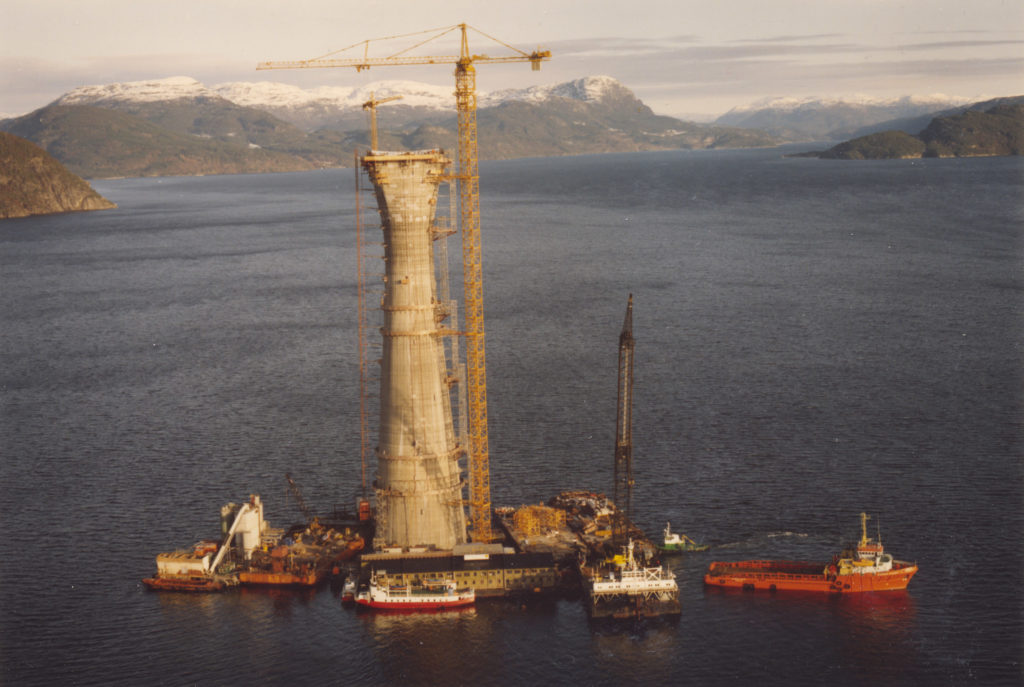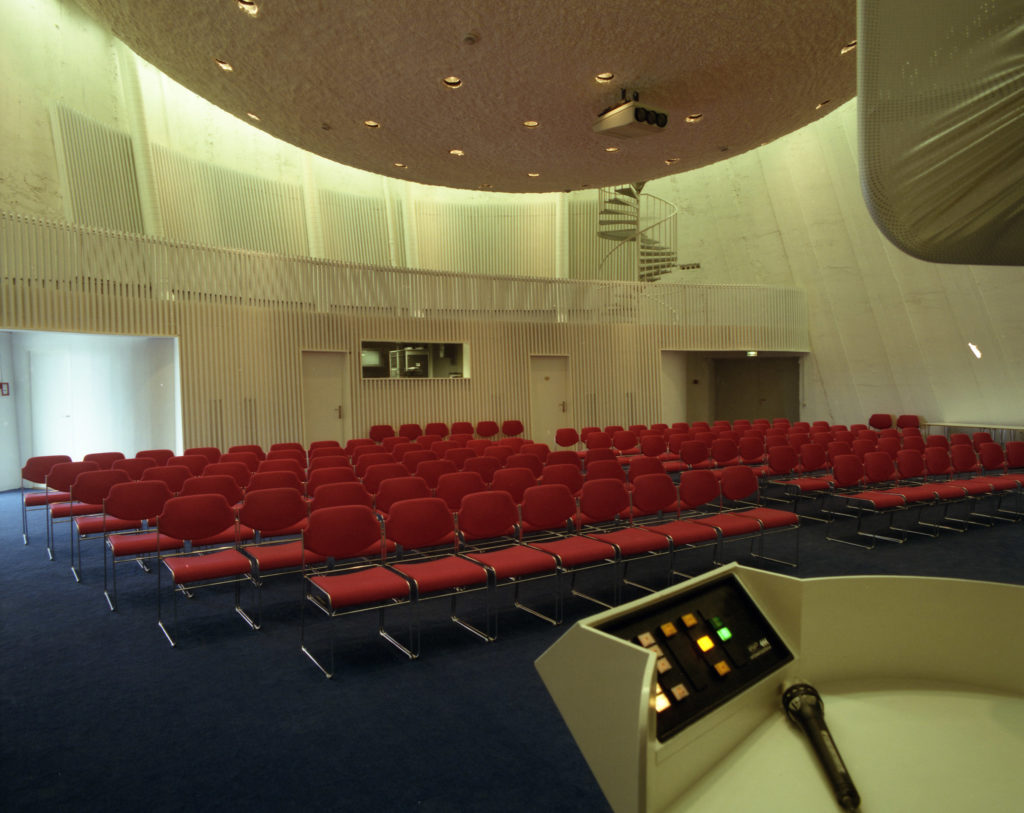Stavanger’s leaning tower

This trial structure was erected in February 1984 to demonstrate that slipforming could be used to build a large inclined structure with a variable diameter.
In addition, the company wanted to develop a new system for conical inclined slipforming and try it out in practice on a large scale.
The completed tower stood 50 metres high, had an external diameter which varied between 16 and 23 metres and a wall thickness ranging from 75 to 100 centimetres.
With the top eight metres completed in lightweight concrete, it stands at an angle of 16 degrees from the vertical – compared with “just” four degrees for the leaning tower at Pisa in Italy.
 det skjeve tårn i stavanger, bygging, betongunderstell, engelsk
det skjeve tårn i stavanger, bygging, betongunderstell, engelskThe Draugen concrete gravity base structure (GBS) also had a challenging geometry, with the monotower support shaft’s diameter varying from 44.5 metres at its base to 15 at the waterline.
From there, continuous slipforming carried it up to a rectangular top section measuring 25 by 25 metres. The wall thickness of the shaft varied from 160 to 70 metres.
This configuration called for a demanding slipforming operation, which clearly drew on all NC’s earlier experience – including construction of the Leaning Tower.
The latter provided greater confidence that slipforming could be done with large variations in inclination, dimensions and geometry. It was right at the edge of the possible at that time.
Pursuant to the permit from the City of Stavanger, the Leaning Tower was planned as a temporary structure and equipped with channels for demolition charges.
But NC saw opportunities, and a number of ideas emerged. Two were actually implemented, with the big internal void used as a cement store for many years. It could hold 9 000 tonnes.
 det skjeve tårn i stavanger, konferansesal, engelsk
det skjeve tårn i stavanger, konferansesal, engelskA conference auditorium was also installed on top of the tower, with seating for 100 people and a viewing platform circling the whole building which had great views of the fjord landscape.
The conference facility was much used by NC until it ceased operations in Hinnavågen in 1994. It subsequently also accommodated technical meetings and festivities.
In October 2007, the tower was opened to the general public. It was even leased by the city to the Hinna congregation for a time, and many church services were held there until 2010.
 det skjeve tårn i stavanger, engelsk
det skjeve tårn i stavanger, engelskThe city council has dropped the demand to demolish the tower. On the contrary, it has added the structure to Stavanger’s list of 58 protected buildings which have received their own plaque.
Political management of Norway’s oil sectorProduction licence awarded